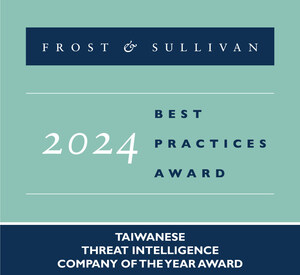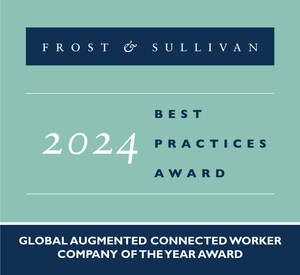Bionic Prosthetics Manufacturers Drive R&D Initiatives across Emerging Markets to Impel Its Adoption
Open-source bionic prosthetics emerge as a highly successful business model hinging on affordability, finds Frost & Sullivan's TechVision team
SANTA CLARA, Calif., Aug. 9, 2017 /PRNewswire/ -- The legal and procedural complications associated with the wide-scale prescription of brain implants for treating epilepsy and other psychiatric disorders have created huge concerns among stakeholders. Despite efforts to demonstrate the clinical safety and efficacy of bionic prosthetics proving its economic value, the current reimbursement scenario across developing nations and inadequate product diversification efforts affect brand positioning across high-growth markets. Manufacturers want to mitigate the risks of sourcing parts and components from single-source suppliers, thereby opening up opportunities for in-house product research and development (R&D) of bionic prosthetics. Governments are increasing their spending on bionic devices that help clinicians resolve technological challenges in restoring haptic sense to bionic hands. Additionally, escalating volumes of ophthalmic procedures require caregivers to identify the optimal stimulation parameters for bionic retinal implants, developed for restoring blindness.
"There is huge commercial potential for artificial pancreas, which can sense the level of insulin and glucagon in the blood and deliver the appropriate doses for clinically effective management of diabetes," explained Frost & Sullivan TechVision Industry Analyst Arjunvasan Ambigapathy. "Another likely blockbuster bionic solution is brain-powered prosthetics that can completely replace the function of a lost limb through activation of brain-controlled interface."
Future of Bionics is part of Frost & Sullivan's TechVision (Health & Wellness) Growth Partnership Service program. The study analyzes the top trends from both technology and end-user perspectives as well as the competitive landscape, with a focus on the roles and strategies of existing and emerging participants in the global market. The research also studies the ongoing transformations in healthcare and technology-enabled business models of established participants.
To access more information on this analysis, please click here.
Cardiac bionics is a recent entrant to the field of bionics for emerging markets and has already established its credibility in addressing a range of debilitating disorders such as ischemic heart disease, necessitating invasive interventions. In addition, bionic devices for chronic obstructive pulmonary disorder (COPD) involve minimally invasive devices that mimic the function of lungs.
While there are many bionic devices at various stages of commercialization, their adoption rates are modest, with the exception of robotic exoskeletons for rehabilitation. In North America, companies such as Advanced Bionics, ReWalk Robotics and Medtronic have been successful in increasing the large-scale adoption of bionic prosthetics, achieving impressive market penetration.
Bionic manufacturers employing the open-source prosthetics business model have enjoyed a significant competitive advantage by gaining wider access to customers. This business model involves the use of inexpensive electronics and 3D printing to create bionic prosthetics, like bionic hands and legs, which meet the needs of patients who do not receive reimbursement for bionic prosthetics. Other innovative business models include the bionic runner and bionic gym, which help patients achieve their fitness goals and support their lifestyle modification programs. These business models are poised for very high commercial success across emerging markets, considering their strategy of sourcing innovations from emerging markets.
"The most successful participants will be those that actively collaborate with care providers and insurance providers during new product development initiatives and explore novel applications such as design of clinically safe and effective implantable bionic prosthetics," noted Ambigapathy.
About TechVision
Frost & Sullivan's global TechVision practice is focused on innovation, disruption and convergence and provides a variety of technology-based alerts, newsletters and research services as well as growth consulting services. Its premier offering, the TechVision program, identifies and evaluates the most valuable emerging and disruptive technologies enabling products with near-term potential. A unique feature of the TechVision program is an annual selection of 50 technologies that can generate convergence scenarios, possibly disrupt the innovation landscape, and drive transformational growth. View a summary of our TechVision program by clicking on the following link: http://ifrost.frost.com/TechVision_Demo.
About Frost & Sullivan
Frost & Sullivan, the Growth Partnership Company, works in collaboration with clients to leverage visionary innovation that addresses the global challenges and related growth opportunities that will make or break today's market participants. For more than 50 years, we have been developing growth strategies for the global 1000, emerging businesses, the public sector and the investment community. Contact us: Start the discussion
Future of Bionics
D7B1
Contact:
Mariana Fernandez
Corporate Communications – North America
P: (210) 348 1012
E: [email protected]
Twitter: @TechVision_FS
Linkedin: www.frost.com/techvisionlinkedin
http://www.frost.com
http://www.frost.com/techvision
SOURCE Frost & Sullivan
Related Links
WANT YOUR COMPANY'S NEWS FEATURED ON PRNEWSWIRE.COM?
Newsrooms &
Influencers
Digital Media
Outlets
Journalists
Opted In






Share this article